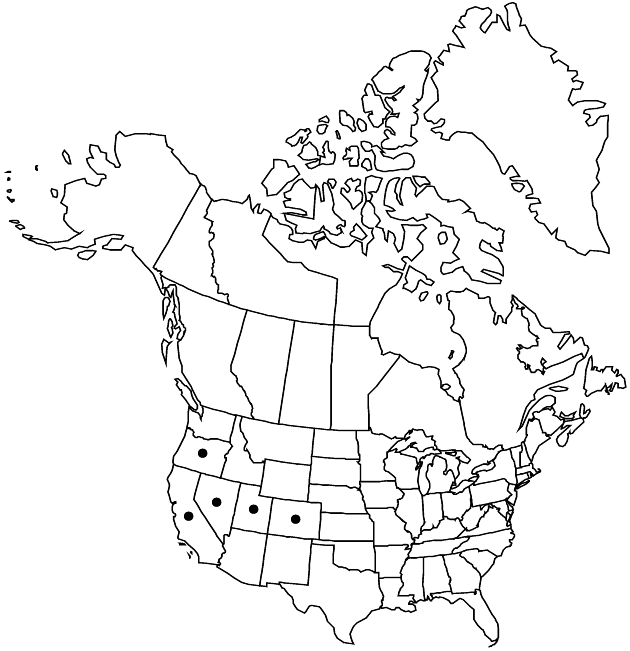Erigeron vagus
Univ. Wyoming Publ. Sci., Bot. 1: 179. 1926.
Perennials, 2–4(–5.5) cm (cespitose, relatively loose); taprooted, caudices diffuse with extensive system of relatively long, slender, rhizomelike branches. Stems erect (simple, ± scapiform), sparsely hirsute, sparsely to densely minutely glandular. Leaves basal (persistent) and cauline; blades spatulate, (5–)10–25(–30) × 4–10 mm, distal cauline bractlike, margins 3–5-lobed (lobes rounded), ultimately entire, faces finely puberulent, minutely glandular. Heads 1. Involucres 5–7 × 8–16 mm. Phyllaries in 2–3 series (purplish), hirsute to villoso-hirsute (hairs without colored crosswalls), minutely glandular. Ray florets 25–40; corollas white to pink, 4–7 mm, laminae coiling. Disc corollas 3–3.8 mm. Cypselae 1.9–2.2 mm, 2-nerved, faces finely strigoso-hirsute; pappi: outer 0 (or inconspicuous), inner of ca. 20 bristles. 2n = 18.
Phenology: Flowering late Jun–Aug.
Habitat: Rocky habitats, especially taluses, ponderosa pine, bristlecone pine, alpine meadows
Elevation: 2400–4400 m
Distribution

Calif., Colo., Nev., Oreg., Utah.
Discussion
Selected References
None.